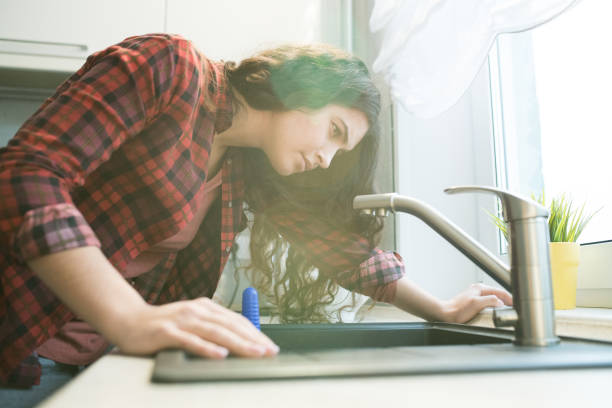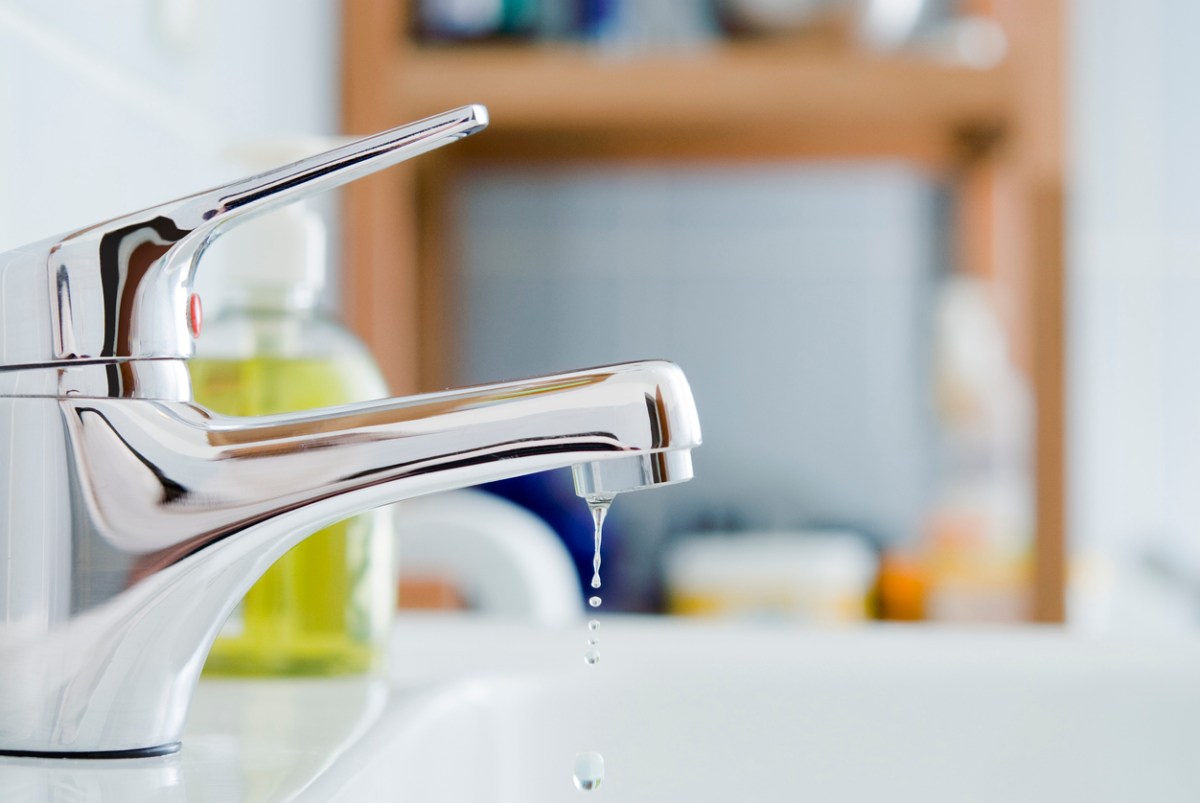Which It's Required to Resolve a Malfunctioning Faucet
CallThe writer is making a few good observations regarding 4 Common Reasons for a Leaky Faucet overall in this post down the page.

Trickling taps could seem like a minor hassle, however their impact exceeds simply the inconvenience of the sound. From wasting water to sustaining unneeded monetary costs and health and wellness dangers, ignoring a dripping tap can result in various consequences. In this write-up, we'll look into why it's critical to address this common house issue promptly and successfully.
Wastefulness of Water
Environmental Influence
Leaking faucets add substantially to water wastage. According to the Epa (EPA), a single faucet leaking at one drip per secondly can waste greater than 3,000 gallons of water annually. This not only pressures water resources yet additionally impacts communities and wildlife depending on them.
Step-by-Step Guide to Repairing a Dripping Tap
Tools Called for
Before trying to deal with a dripping tap, gather the required tools, consisting of a flexible wrench, screwdrivers, replacement parts (such as washers or cartridges), and plumber's tape.
Common Tap Issues and Their Solutions
Determine the sort of faucet and the certain concern causing the drip. Common issues consist of damaged washers, rusty valve seats, or defective O-rings. Describe maker directions or on-line tutorials for detailed advice on repair work.
Financial Expenses
Enhanced Water Bills
Beyond the environmental influence, dripping taps can blow up water costs significantly. The built up wastage with time converts right into higher energy expenditures, which might have been avoided with prompt repair services.
Prospective Residential Or Commercial Property Damage
Moreover, long term leaking can lead to harm to fixtures and surfaces bordering the faucet. Water build-up can create staining, deterioration, and even structural problems if left ignored, resulting in additional repair work costs.
Health and wellness Problems
Mold and Mildew Growth
The continuous existence of wetness from a trickling tap creates a suitable environment for mold and mold growth. These fungis not just compromise interior air high quality yet also posture health threats, specifically for individuals with respiratory system problems or allergic reactions.
Waterborne Conditions
Stationary water in leaking faucets can end up being a breeding place for bacteria and various other pathogens, boosting the risk of waterborne illness. Contaminants such as Legionella germs thrive in stagnant water, potentially bring about serious diseases when ingested or inhaled.
DIY vs. Professional Fixing
Pros and Cons of DIY Repair
While some may try to deal with a leaking tap themselves, DIY repairs include their very own set of challenges. Without correct understanding and devices, DIY efforts can worsen the concern or lead to incomplete repairs, prolonging the problem.
Benefits of Employing a Professional Plumber
Hiring a professional plumber makes sure that the underlying root cause of the leaking faucet is attended to properly. Plumbing technicians possess the experience and devices to diagnose and fix faucet problems efficiently, saving time and decreasing the risk of more damages.
Ecological Obligation
Individual Contribution to Preservation
Taking obligation for repairing dripping taps aligns with wider efforts toward water conservation and environmental sustainability. Every individual's activities jointly make a considerable influence on preserving priceless sources.
Lasting Living Practices
By focusing on timely fixings and taking on water-saving routines, people add to sustainable living methods that profit both existing and future generations.
Safety nets
Routine Maintenance Tips
To stop dripping taps, perform regular maintenance such as cleaning up aerators, examining for leakages, and replacing damaged components without delay. Furthermore, think about installing water-saving devices or updating to a lot more efficient fixtures.
Importance of Prompt Fixes
Resolving leaking taps as quickly as they're observed protects against further water wastage and possible damages, inevitably conserving both water and money in the future.
Impact on Home Value
Understanding of Well-Maintained Property
Maintaining a building in good condition, consisting of dealing with maintenance problems like leaking taps, boosts its viewed value and charm amongst possible purchasers or lessees.
Impact on Resale Worth
Features with well-kept plumbing components, including taps, command higher resale values in the real estate market. Resolving trickling taps can add to a positive impact during building assessments and negotiations.
Verdict
Resolving a dripping tap surpasses simple comfort; it's a vital action toward conserving water, minimizing monetary prices, and safeguarding health and residential property. Whether via DIY repair services or expert support, acting to repair leaking taps is a little yet impactful means to promote liable stewardship of sources and contribute to a healthier, a lot more lasting future.
How to Fix a Dripping or Leaky Faucet
A leaking faucet is one of the most common problems that homeowners encounter, but it being commonplace doesn’t make it any less annoying. The constant drip drip drip of a leaking bathtub faucet, showerhead, or sink tap can disturb your home’s serenity. Left neglected, a dripping faucet can also result in higher water bills and discoloration or mold growth in your sink or plumbing fixtures.
Fortunately, you don’t have to be a trained plumber to know how to stop a dripping faucet. With some basic tools, replacement parts, and a little patience, leaky faucet repair is a breeze. In this article, we’ll explain what causes dripping faucets and how you can fix them.
What Causes a Leaking Faucet?
Kitchen and bathroom faucets come in all manner of designs, but most involve some combination of valves, O-rings, seals, and washers. The O-ring is usually the weakest link, but any one of these pieces can wear down over time. Heat, moisture, temperature fluctuations, minerals, mold, and movement can contribute to warping and corrosion, breaking the watertight seal. This just comes with the territory of being a homeowner. Everything is always subject to wear and tear, and some component parts of your appliances and fixtures need to be replaced on occasion. At least replacement O-rings are cheap!
More rarely, dripping faucets can be a symptom of excessively high water pressure. Were this the case in your home, you would probably notice that the leak is not isolated to one faucet. Water pressure issues are harder to resolve on your own. We recommend contacting a professional plumber if you suspect your water pressure is too high.
How to Fix a Dripping Faucet
Pipe wrench or monkey wrench Allen wrench set Screwdrivers Old towel or rag Shut off the water.
Before you do anything, you need to turn off the water to keep from drenching your kitchen or bathroom. You should find a valve under the sink and against the wall. Once you’ve turned this valve, try turning the faucet on to confirm that the water source has been cut off.
If you can’t locate your local valve for the faucet you’re working on, you can always shut off the water to the house at the main valve. Of course, this will prohibit anyone from using the sinks, showers, or toilets while you’re working on the faucet that’s giving you trouble.
Plug or block the drain.
You’ll be disassembling the faucet and removing some small bits of hardware. Plug the drain with a stopper or rag to avoid the possibility of a small screw falling into your P-trap.
Take apart the faucet assembly.
There are several varieties of kitchen and bathroom faucets, each with its own manner of assembly. For detailed instructions on how to disassemble your faucet, you can refer to the fixture’s manual or contact the manufacturer. If you know whether you have a ball, disc, cartridge, or compression faucet, you can find detailed schematics online.
In general, you need to begin by removing the faucet handles. You might notice a small screw that you’ll need to remove with a screwdriver or Allen wrench. If you don’t see any visible securing hardware, it’s likely hidden under a decorative cap that can be unscrewed or popped off with flathead screwdriver.
Remove each piece methodically, consulting a schematic when necessary. Take notes or arrange the pieces in such a way to make it easier to correctly reassemble the faucet later.
Remove the cartridge.
Once you’ve removed the handles and securing hardware, you should be able to remove the valve cartridge or stem. Some cartridges will slide right out. Other faucet models will require you to loosen a nut with a pipe wrench before you can remove the valve stem.
Examine the exposed hardware.
With the cartridge or stem removed, inspect the component parts. Check the rubber O-rings for wear and tear. Also examine the seat washer for corrosion or other damage. These pieces are usually the responsible parties for a dripping faucet, but it’s worth inspecting the other component parts while you have the faucet disassembled.
Find replacement parts.
Once you’ve identified which faucet component has failed, find an identical replacement. Your local hardware store should have O-rings, seat washers, and other standard components in stock. If you have a luxury or uncommon faucet, you may have to contact the manufacturer for a replacement part.
It’s a good idea to take your old parts with you to the hardware store so you can compare them with the store’s inventory and be sure you’re purchasing the correct replacement.
Reassemble the faucet.
With your new parts in hand, reconstruct the faucet and handles. Don’t be tempted to overtighten screws or nuts. You might think this could create a better seal, but it can instead damage or bend a delicate part of the assembly and create a new problem for you.
Turn on the water and test the faucet.
The only thing left to do is test your work. Unplug the sink, turn the water back on, and try the faucet. Congratulate yourself on a job well done!
https://www.libertyhomeguard.com/how-to-fix-a-dripping-or-leaky-faucet/

As an avid reader on Leaky Faucets: Why They Happen & What to Do About Them, I thought sharing that piece of content was mandatory. Sharing is caring. Helping people is fun. Thanks for your time invested reading it.